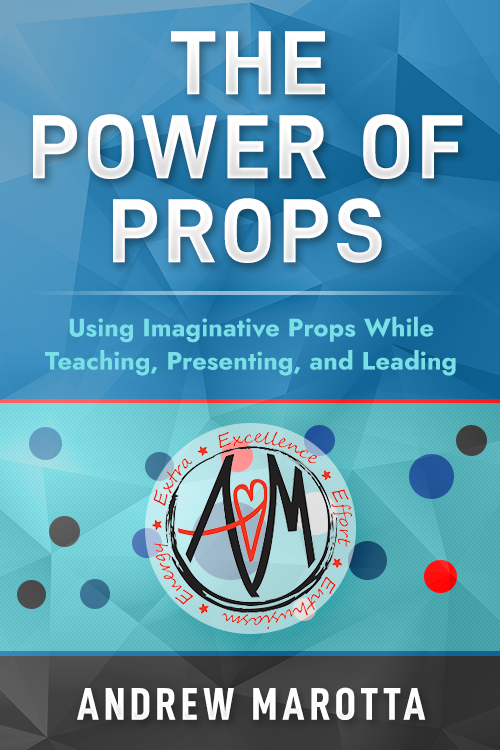In a world where attention spans are constantly being challenged, the quest for more engaging ways to impart knowledge and lead effectively is ongoing. School leadership expert Andrew Marotta, an advocate for innovative educational strategies, brings a refreshing perspective on how to captivate and educate audiences of all ages. Through the strategic use of props, he unveils a method that goes beyond traditional teaching and presenting techniques, offering a tangible bridge between concepts and comprehension.
Bringing Concepts to Life
The essence of using props in any educational or leadership context lies in their ability to make abstract ideas concrete. Marotta passionately expresses how “Props can turn a mundane lesson into an unforgettable experience,” highlighting the transformative effect a simple object can have on an audience. This approach not only engages but also anchors the lesson in the minds of learners. Here are a few ways to utilize props:
- Visual Impact – A prop can serve as a powerful visual cue that helps to illustrate complex ideas in a simple and understandable manner.
- Emotional Connection – Props can evoke emotions, making the learning experience more personal and impactful.
- Interactive Learning – The use of props encourages participation, turning passive or distracted listeners into active learners.
Enhancing Engagement and Retention

One of the most compelling benefits of using props is their ability to increase engagement and improve information retention among audiences. Marotta notes, “A well-chosen prop can be the difference between a good presentation and a great one.” This statement underscores the critical role props play in not just catching but holding the audience’s attention throughout the learning process. You can achieve this by:
- Breaking Down Barriers – Props can make challenging subjects more accessible and less intimidating.
- Memorable Moments – The novelty and uniqueness of props make them memorable, aiding in the long-term retention of information.
- Encouraging Curiosity – Props stimulate questions and curiosity, fostering a more interactive and explorative learning environment.
Strategies for Effective Prop Use
Props can convey a sense of authority and confidence for school leaders, while also providing a memorable, tangible representation of your message. While the benefits of using props are clear, the success of this method significantly hinges on the strategy behind the selection and integration of these physical items into presentations or lessons. “Choose props that are relevant to your content and resonate with your audience,” advises Marotta, emphasizing the need for thoughtfulness and relevance in prop selection. Here are some tips for success:
- Relevance is Key – Ensure that each prop directly relates to the content and enhances understanding.
- Simplicity Matters – Opt for props that are simple and easy to understand, avoiding potential confusion.
- Timing and Delivery – The impact of a prop is significantly influenced by how and when it’s introduced in the presentation.
Strategic Leadership
In the pursuit of more effective and engaging teaching and school leadership methods, the creative use of props emerges as a powerful strategy. Andrew Marotta’s insights into the role of tangible items in enhancing learning experiences shed light on an often-overlooked aspect of presentation and educational design. By carefully integrating props into lessons and presentations, educators and school leaders can create more impactful experiences that resonate long after the session has ended.
For those eager to explore this innovative approach further, Marotta’s course, “The Power of Props-Using Imaginative Props While Teaching, Presenting, and Leading,” offers a comprehensive guide filled with actionable tips and strategies to transform your educational endeavors. Embrace the power of props and watch as your presentations and lessons come to life in ways you never imagined.
Want to learn more about how you can set yourself and school leaders up for success? Explore the School Leadership Academy.


